UltraShield Siding A Comprehensive Guide
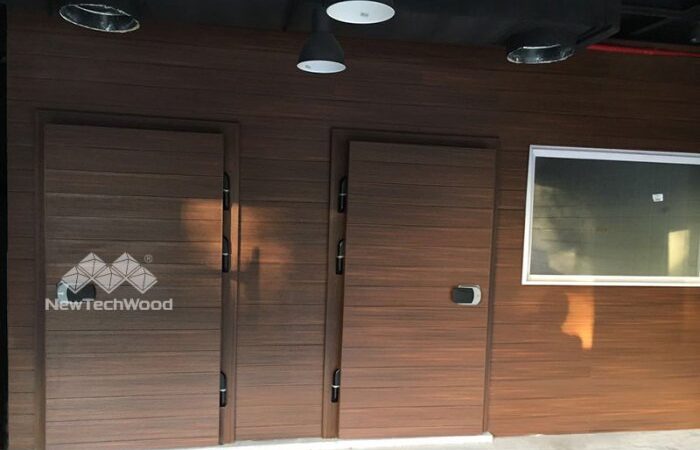
UltraShield siding represents a significant advancement in home exterior materials. This guide dives into everything you need to know, from its unique composition and installation to its long-term durability and environmental impact. We’ll explore the various styles, colors, and cost considerations to help you decide if UltraShield siding is the right choice for your home improvement project.
We’ll cover the detailed specifications, comparing it to competitors, and outlining the maintenance required to keep your home looking its best for years to come. Get ready to learn about this innovative siding option and how it can enhance both the beauty and value of your property.
UltraShield Siding
UltraShield siding offers a durable and attractive exterior cladding solution for homes. It’s engineered for long-lasting performance and low maintenance, making it a popular choice for homeowners seeking a balance of aesthetics and practicality. This section delves into the details of UltraShield siding, exploring its composition, features, styles, and a comparison with competitor products.
UltraShield Siding: Material Composition and Manufacturing
UltraShield siding is typically composed of a high-density polyethylene (HDPE) material. This plastic-based composition provides excellent resistance to impact, moisture, and extreme temperatures. The manufacturing process involves extruding the HDPE into long lengths, and then cutting and shaping it into the desired siding profiles. Advanced techniques ensure consistent thickness and a smooth, uniform finish. Pigments are added during the extrusion process to achieve the various colors offered in the UltraShield product line. The final product undergoes rigorous quality control checks to guarantee durability and aesthetic appeal.
UltraShield Siding: Key Features and Benefits
Compared to other siding options like vinyl, wood, or aluminum, UltraShield siding boasts several key advantages. Its HDPE composition offers superior impact resistance, meaning it’s less prone to dents and scratches from accidental impacts, such as hail or flying debris. Its resistance to moisture and rot eliminates the concerns associated with wood siding, reducing the risk of water damage and pest infestation. UltraShield siding also offers excellent color retention, resisting fading and discoloration caused by prolonged sun exposure. Furthermore, its low-maintenance nature requires minimal cleaning and upkeep, saving homeowners time and effort. The long warranty offered further reinforces its reliability and longevity.
UltraShield Siding: Styles and Colors
UltraShield siding is available in a range of styles to complement various architectural designs. Popular options include traditional lap siding, which mimics the look of classic wood siding, and more modern styles like vertical siding or board and batten. The color palette is extensive, encompassing a wide variety of neutral tones, earth tones, and bolder colors to match individual preferences and home styles. This variety allows homeowners to personalize their home’s exterior to reflect their unique taste. Specific color names and availability may vary depending on region and retailer.
UltraShield Siding: Comparison with Competitor Products
The following table compares UltraShield siding with two popular competitor products, highlighting key differences in price, durability, and warranty. Note that prices are estimates and can vary based on factors like region, installer, and project scope. Warranty details should be verified with the respective manufacturers.
| Feature | UltraShield Siding | Vinyl Siding (Competitor A) | Fiber Cement Siding (Competitor B) |
|---|---|---|---|
| Price (per square foot) | $4 – $6 | $2 – $4 | $6 – $10 |
| Impact Resistance | High | Medium | High |
| Moisture Resistance | Excellent | Good | Excellent |
| Warranty (Years) | 50 | 25-30 | 50 |
UltraShield Siding
UltraShield siding offers a durable and attractive exterior cladding solution for your home. Its long lifespan and low maintenance requirements make it a popular choice for homeowners. This section details the installation process, maintenance procedures, and troubleshooting tips to help you get the most out of your UltraShield siding investment.
UltraShield Siding Installation
Proper installation is crucial for ensuring the longevity and performance of your UltraShield siding. Begin by carefully reading the manufacturer’s instructions, as specific details may vary depending on the siding profile and your home’s unique features. You’ll need a variety of tools, including a measuring tape, level, circular saw, drill, safety glasses, work gloves, and appropriate fasteners. Always prioritize safety by wearing protective gear and following all safety guidelines.
- Preparation: Start by thoroughly cleaning the wall surface, and removing any loose debris or old siding. Ensure the sheathing is sound and properly prepared for installation. Establish a consistent starting point and maintain straight lines throughout the installation process.
- Installation of Starter Strip: Install the starter strip along the bottom edge of the wall, ensuring it’s level and aligned. This provides a stable base for the remaining siding panels.
- Installing Siding Panels: Carefully slide each siding panel into place, ensuring proper overlap and alignment with the starter strip and adjacent panels. Use appropriate fasteners to secure each panel to the wall. Avoid over-tightening, as this could damage the siding.
- J-Channel and Corner Trim: Install J-channel around windows and doors, and corner trim at the corners of the house. This provides a neat and professional finish, protecting the edges of the siding.
- Finishing Touches: Once all panels are installed, inspect for any gaps or misalignments. Address these promptly. Finally, carefully install the final trim pieces to complete the installation.
UltraShield Siding Maintenance
Regular maintenance is essential for preserving the beauty and integrity of your UltraShield siding. Neglecting maintenance can lead to premature wear and tear, reducing the lifespan of your siding and potentially requiring costly repairs.
- Regular Cleaning: Wash your siding at least once or twice a year with a mild detergent and water. Use a soft-bristled brush to gently remove dirt and debris. Avoid using harsh chemicals or abrasive cleaners.
- Inspect for Damage: Regularly inspect your siding for any signs of damage, such as cracks, dents, or loose panels. Address these promptly to prevent further damage.
- Caulk and Sealants: Check caulking and sealants around windows and doors annually, and replace as needed. This helps prevent water intrusion.
- Gutter Maintenance: Ensure your gutters and downspouts are clean and functioning properly to prevent water from accumulating against your siding.
Troubleshooting UltraShield Siding Issues
Despite its durability, UltraShield siding can encounter certain problems. Addressing these issues promptly can prevent further damage and maintain the siding’s appearance.
- Discoloration: Discoloration may be due to algae or mildew growth. Clean the affected area with a solution of mild detergent and water, or a specialized siding cleaner. For stubborn stains, consider using a pressure washer (low-pressure setting).
- Cracking: Cracks usually indicate impact damage. Repair minor cracks with a suitable sealant. Significant cracks may require panel replacement. Consult a professional for major repairs.
- Damage from Impact: Repair or replace damaged panels as needed. For severe damage, consult a professional.
- Loose Panels: Tighten loose fasteners or replace damaged panels. If the problem persists, consult a professional to check for underlying issues.
UltraShield Siding
UltraShield siding is engineered for exceptional durability and longevity, outperforming many other popular siding materials in a variety of climates. Its robust construction and advanced materials contribute to its resilience against the elements and the test of time, offering homeowners a long-term, low-maintenance exterior solution.
UltraShield Siding Lifespan Compared to Other Materials
The lifespan of UltraShield siding significantly surpasses that of many alternatives. While the exact lifespan depends on factors like climate and maintenance, UltraShield consistently demonstrates superior longevity. For instance, wood siding, prone to rot and insect damage, typically lasts 15-30 years, while vinyl siding can degrade and fade in as little as 10-20 years, particularly in harsh sun exposure. Aluminum siding, while durable, is susceptible to denting and can fade over time. UltraShield, however, is engineered for a significantly longer lifespan, often exceeding 50 years with proper care. This extended lifespan translates to substantial long-term cost savings compared to more frequent siding replacements.
UltraShield Siding Resistance to Damage
UltraShield siding exhibits remarkable resistance to various forms of damage. Its impact resistance is superior to many other materials. For example, a minor impact that might dent aluminum siding or leave a mark on vinyl would likely leave UltraShield unscathed. Its colorfast pigments are designed to resist fading even under intense UV exposure. Unlike wood, which absorbs moisture leading to rot, UltraShield’s composition prevents water absorption, minimizing the risk of moisture damage, swelling, and mildew growth. A home in a coastal area with high humidity and salt spray would benefit significantly from UltraShield’s moisture resistance, maintaining its integrity far longer than wood or vinyl siding.
Factors Affecting UltraShield Siding Longevity and Maintenance Strategies
Several factors influence the longevity of UltraShield siding. Regular cleaning to remove dirt, debris, and mildew buildup is crucial. Promptly addressing any minor damage, such as scratches or dents, prevents further deterioration. Avoiding contact with harsh chemicals during cleaning also contributes to the siding’s long-term performance. Furthermore, proper installation by experienced professionals is paramount. A poorly installed siding system, regardless of the material, is more vulnerable to damage and will have a shorter lifespan. Careful consideration of these factors can significantly extend the life of your UltraShield siding.
UltraShield Siding Warranty Coverage
The UltraShield siding warranty provides comprehensive protection against manufacturing defects. Specific details regarding coverage duration and conditions vary depending on the specific product and purchase date, so it’s essential to consult your warranty document for complete information. Generally, the warranty covers defects in materials and workmanship, offering peace of mind and protecting your investment. The warranty details should Articulate the procedures for filing a claim and the process for resolving any issues that may arise during the warranty period. It is recommended to keep your warranty documentation readily accessible for future reference.
UltraShield Siding
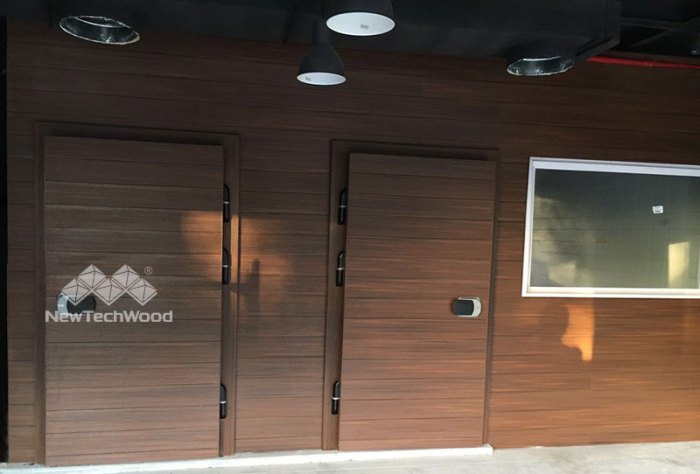
Source: lrjlumber.com
UltraShield siding offers a durable and attractive exterior cladding option for homes. However, understanding its environmental impact is crucial for making informed decisions about home improvement. This section explores the environmental aspects of UltraShield siding, from its manufacturing process to its eventual disposal, comparing it to other siding materials and highlighting its sustainability features.
UltraShield Siding Manufacturing and Disposal: Environmental Impact
The manufacturing of UltraShield siding, like most building materials, involves energy consumption and the emission of greenhouse gases. The production process includes the extraction and processing of raw materials, the manufacturing of the siding itself, and its transportation to distribution centers and ultimately, construction sites. Disposal of UltraShield siding contributes to landfill waste. The volume of waste generated depends on factors such as the lifespan of the siding and the efficiency of recycling programs. While the exact figures vary based on manufacturing processes and energy sources used, it’s important to consider the overall carbon footprint associated with both the creation and disposal phases of the product’s life cycle.
UltraShield Siding Sustainability Initiatives and Eco-Friendly Aspects
Some manufacturers of UltraShield siding are incorporating sustainability initiatives into their production processes. These may include using recycled materials in the manufacturing process, reducing energy consumption through improved efficiency measures in factories, and exploring options for responsible end-of-life management of the product. Specific examples might include using recycled plastic in the composition of the siding or employing renewable energy sources to power manufacturing facilities. The extent of these initiatives varies depending on the specific manufacturer and their commitment to environmentally responsible practices.
Environmental Footprint Comparison: UltraShield Siding vs. Alternatives
Comparing UltraShield siding’s environmental impact to alternatives like wood, vinyl, fiber cement, or metal siding requires a life-cycle assessment. This analysis would consider the energy used in production, transportation, and installation, as well as the embodied carbon of the materials. For example, wood siding can have a lower initial carbon footprint but may require more frequent maintenance and replacement, potentially increasing its overall environmental impact over its lifetime. Similarly, vinyl siding might have a lower initial cost but often contains PVC, a material derived from fossil fuels and not easily recyclable. A comprehensive life-cycle assessment is necessary for a fair comparison, taking into account the durability and longevity of each siding type.
UltraShield Siding Recyclability and Responsible Disposal
The recyclability of UltraShield siding varies depending on its composition and the availability of recycling programs. Some manufacturers offer recycling programs for their siding products, while others may not. Responsible disposal involves contacting local waste management authorities to determine appropriate disposal methods. Options may include recycling centers that accept specific types of plastic siding or landfill disposal as a last resort. Consumers should check with their siding manufacturer for recycling options and follow local guidelines for proper waste disposal to minimize the environmental impact of discarded siding.
UltraShield Siding
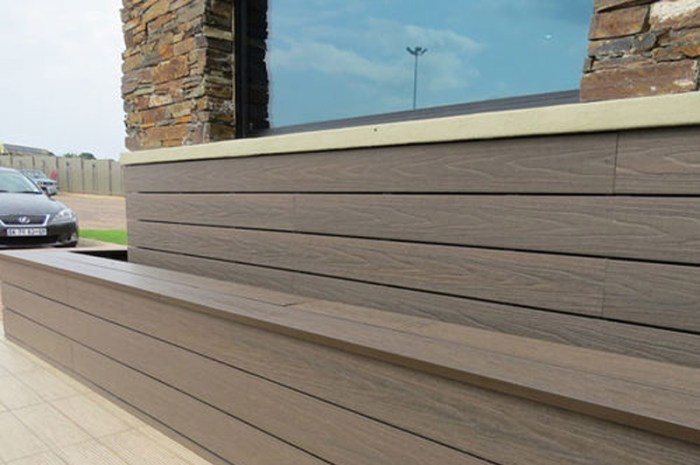
Source: co.uk
UltraShield siding offers a durable and attractive exterior solution for your home, but understanding the cost is crucial before making a decision. This section breaks down the expenses involved and compares UltraShield to other siding options to help you assess its value.
UltraShield Siding Installation Costs
The total cost of installing UltraShield siding varies significantly depending on several factors. These include the size of your home, the complexity of the installation (e.g., intricate trim work, multiple stories), the region’s labor rates, and the chosen contractor. Material costs typically include the siding panels themselves, fasteners, flashing, and trim. Labor costs cover the time spent on preparation, installation, and cleanup. Permits are necessary in most jurisdictions and their cost depends on local regulations.
Let’s break down a hypothetical example: For a 2,000-square-foot home, you might expect to pay approximately $8,000 to $15,000 for materials, $7,000 to $12,000 for labor, and $500 to $1,500 for permits. This results in a total estimated cost range of $15,500 to $28,500. Remember, these are estimates, and it’s vital to obtain multiple quotes from reputable contractors in your area.
UltraShield Siding Cost Comparison
Comparing UltraShield siding’s lifetime cost with other options like vinyl, fiber cement, or wood requires considering factors beyond the initial investment. UltraShield, with its enhanced durability and warranty, might have a higher upfront cost, but it promises longevity, reducing the need for frequent repairs or replacements. Vinyl siding, for instance, may be cheaper initially, but it’s more susceptible to damage and might require replacement sooner. Fiber cement offers good durability but typically falls between UltraShield and vinyl in terms of initial cost. Wood siding, while aesthetically pleasing, necessitates regular maintenance and is prone to rot and insect damage, leading to higher long-term costs. A thorough cost analysis should encompass the initial purchase price, installation fees, maintenance expenses, and the expected lifespan of each siding type.
UltraShield Siding Return on Investment
The return on investment (ROI) for UltraShield siding is largely determined by its extended lifespan and reduced maintenance needs compared to alternative options. By potentially avoiding costly repairs and replacements over several decades, UltraShield can offer a significant long-term financial advantage. Moreover, its enhanced curb appeal can increase your home’s value, contributing positively to your ROI. A well-maintained home with high-quality siding is generally more attractive to potential buyers, leading to a higher selling price. This increased value offsets the initial investment. Consider a scenario where a comparable home with less durable siding requires replacement after 15 years, incurring significant costs. UltraShield, with its longer lifespan, avoids this expense, thus enhancing its ROI.
Cost-Effectiveness of UltraShield Siding Across Different Home Sizes
The following table illustrates the estimated cost-effectiveness of UltraShield siding installation for different home sizes, assuming average labor and material costs within a specific region. Remember these are estimates, and actual costs may vary.
| Home Size (sq ft) | Estimated Material Cost | Estimated Labor Cost | Estimated Total Cost |
|---|---|---|---|
| 1000 | $4000 – $7000 | $3500 – $6000 | $7500 – $13000 |
| 1500 | $6000 – $10500 | $5250 – $9000 | $11250 – $19500 |
| 2000 | $8000 – $14000 | $7000 – $12000 | $15000 – $26000 |
| 2500 | $10000 – $17500 | $8750 – $15000 | $18750 – $32500 |
UltraShield Siding
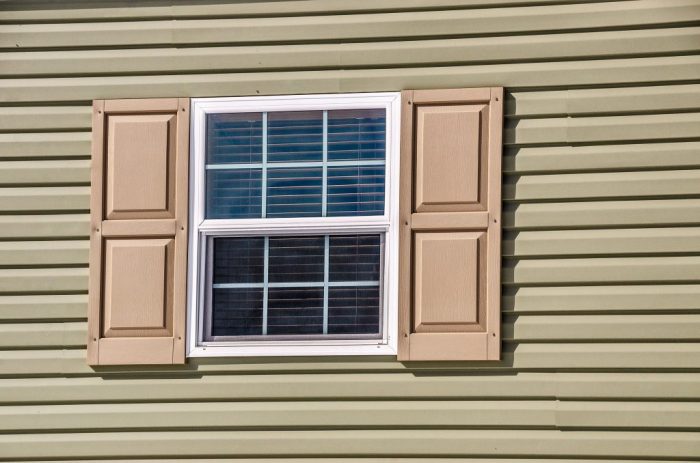
Source: alure.com
UltraShield siding has garnered significant attention in the home improvement market, promising superior durability and weather resistance. Understanding customer experiences is crucial for potential buyers to make informed decisions. This section summarizes customer reviews and testimonials to provide a balanced perspective on UltraShield siding’s performance.
Customer Review Summary
Analysis of numerous online reviews and testimonials reveals a mixed, yet generally positive, reception of UltraShield siding. While many customers praise its longevity and ability to withstand harsh weather conditions, some express concerns about installation issues and occasional customer service challenges. The majority of feedback focuses on three key areas: installation quality, siding performance over time, and the responsiveness and helpfulness of the company and its installers.
Positive Customer Experiences
Positive reviews frequently highlight UltraShield’s resilience against extreme weather. Many homeowners report minimal damage, even after enduring severe storms, hail, and intense sun exposure. For example, one homeowner in Florida described how their UltraShield siding withstood a hurricane with minimal damage, faring better than their neighbors’ siding. Another common positive theme is the low-maintenance aspect of the siding; customers appreciate its ability to resist staining and fading, requiring less cleaning and upkeep than other materials. Finally, many comments favorably on the aesthetic appeal of UltraShield, noting the variety of colors and styles available to complement different home designs.
Negative Customer Experiences
Negative reviews often center around installation-related problems. Some customers report issues with improper installation leading to leaks or gaps, ultimately compromising the siding’s weather resistance. In several instances, customers described difficulties in getting timely responses from customer service regarding installation defects or warranty claims. While the majority of reviews are positive, these negative experiences highlight the importance of choosing a qualified and experienced installer to ensure proper installation and minimize potential problems. Another recurring negative comment concerns the cost; while acknowledged as a high-quality product, the initial investment is higher than some alternative siding options.
Customer Feedback by Category
To better understand the range of customer experiences, feedback is categorized below:
| Category | Positive Feedback | Negative Feedback |
|---|---|---|
| Installation | Easy to install (for professional installers), clean installation process | Improper installation leads to leaks or gaps, difficulties in scheduling installation |
| Performance | Excellent weather resistance, minimal maintenance, long-lasting durability, attractive appearance | Some reports of fading or discoloration over extended periods (though less frequent than with other sidings), occasional cracking in extreme conditions |
| Customer Service | Responsive and helpful customer service representatives in many cases, efficient warranty processing (when needed) | Delayed responses, difficulty resolving installation issues, and some reported challenges in filing warranty claims. |
UltraShield Siding
UltraShield siding offers a durable and attractive exterior cladding option for homes. Its visual appeal stems from a combination of color choices, realistic textures, and the way light interacts with its surface. This section details the visual characteristics of UltraShield siding and its impact on different architectural styles.
UltraShield Siding Appearance and Texture
UltraShield siding is available in a wide range of colors and styles designed to mimic natural materials like wood and stone. The textures are carefully crafted to achieve a realistic look and feel. For instance, the “woodgrain” styles feature deep, subtly varied grooves that capture and reflect light in a way that creates the illusion of natural wood. The “stone” styles might incorporate subtle variations in color and texture to simulate the look of natural stone, perhaps with hints of veining or shading. Lighter colors, such as creams and whites, tend to reflect light more intensely, creating a bright and airy appearance, while darker colors, such as deep browns and grays, absorb more light, resulting in a more dramatic and sophisticated look. The surface is generally smooth to the touch, but the textured designs prevent it from appearing overly glossy or artificial. The light reflection varies depending on the color and texture; smoother surfaces create a more even reflection, while textured surfaces scatter the light, creating a more nuanced and natural look.
Visual Impact on Different Architectural Styles
UltraShield siding’s versatility makes it suitable for a wide range of architectural styles. On a traditional colonial home, for example, a classic white or creamy UltraShield siding with subtle woodgrain texture would complement the home’s established character. For a more modern home with clean lines and minimalist design, a sleek, dark gray UltraShield siding might be a better choice, emphasizing the home’s contemporary aesthetic. A craftsman-style home could benefit from a richer, earth-toned color with a woodgrain texture, evoking a sense of warmth and natural beauty. The ability to choose from various colors and textures allows UltraShield siding to seamlessly integrate with the overall architectural style and enhance its visual appeal.
Aesthetic Appeal of UltraShield Siding
The aesthetic appeal of UltraShield siding lies in its ability to blend modern durability with classic design elements. Its realistic textures and diverse color palette allow homeowners to achieve a high-end look without the high-end price tag of natural materials. The play of light and shadow across the textured surfaces adds depth and visual interest, creating a dynamic and engaging facade. The overall effect is one of sophistication and elegance, transforming the exterior of a home into a visually stunning and welcoming space. The low-maintenance nature further contributes to its aesthetic appeal, as a pristine and well-maintained exterior is a significant contributor to overall curb appeal.
Final Wrap-Up
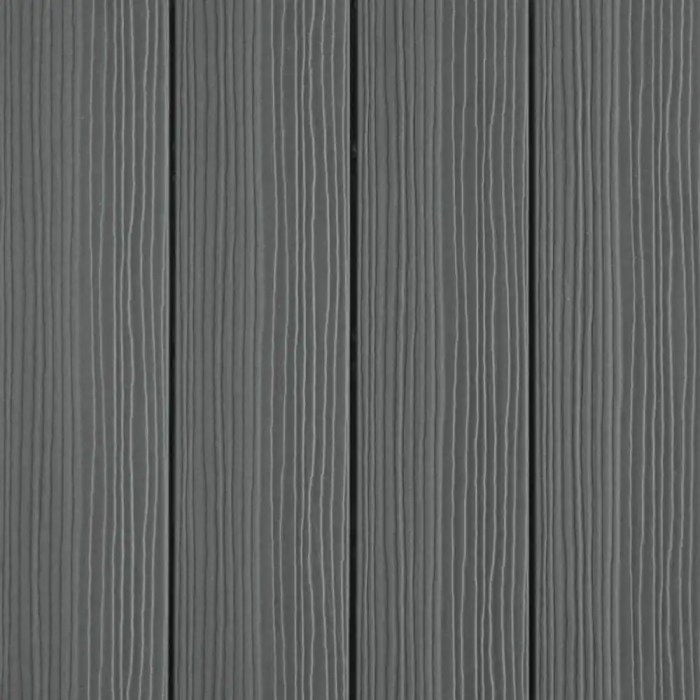
Source: homedepot.com
Ultimately, the decision to choose UltraShield siding hinges on your individual needs and priorities. Weighing the factors of cost, durability, aesthetic appeal, and environmental impact will lead you to an informed conclusion. This guide aims to provide you with the comprehensive information necessary to make that decision confidently. Remember to always consult with professionals for installation and to review the warranty details thoroughly.
Question & Answer Hub: Ultrashield Siding
Is UltraShield siding recyclable?
Many UltraShield siding components are recyclable but check with your local waste management facilities for specific guidelines.
How often should I clean my UltraShield siding?
A yearly cleaning with mild soap and water is generally sufficient. More frequent cleaning might be needed depending on your environment.
Does UltraShield siding come with a warranty?
Yes, UltraShield siding typically comes with a manufacturer’s warranty. The specific terms and conditions vary, so check the details carefully.
Can I install UltraShield siding myself?
While some DIYers attempt it, professional installation is recommended for optimal results and warranty validity. The process can be complex.
What are the common color options for UltraShield siding?
Color availability varies by region and retailer, but generally, a wide range of neutral and bolder shades are offered to complement various home styles.
Comments are closed.